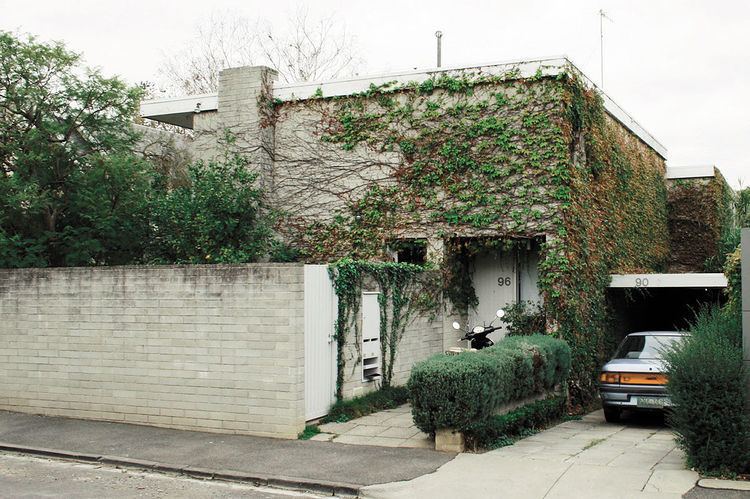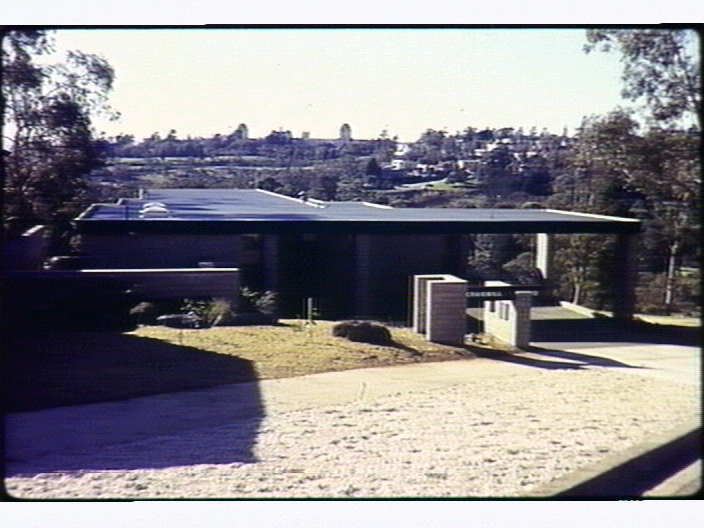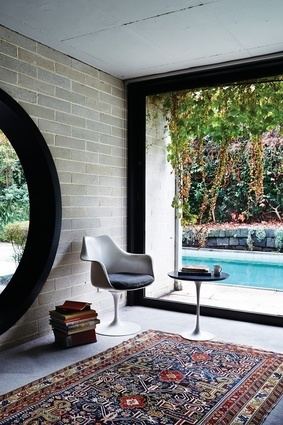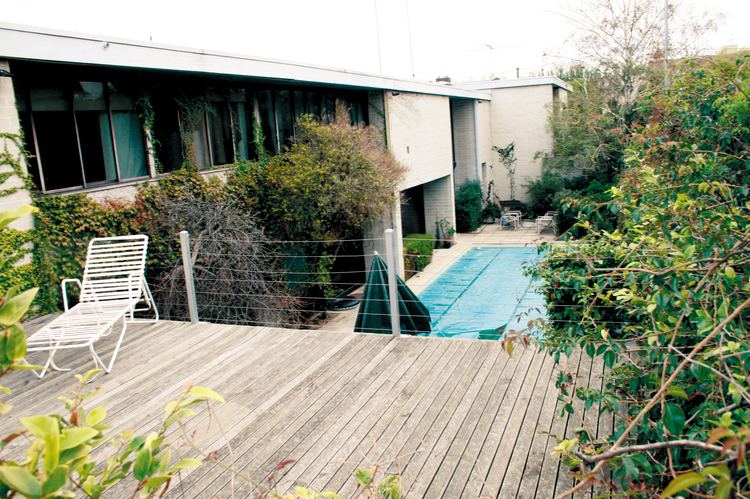Name Neil Clerehan | ||
 | ||
Australian architect Neil Clerehan Died at 94
Neil Clerehan (born 1922) is an Australian architect and architectural writer with an extraordinary six decade career. His work has encompassed pioneering early post-war modernist domestic designs, including dozens of design plans for the 1950s Small Homes Service, Project Homes, architectural promotion and criticism, membership of numerous boards and committees, and obituaries of notable Victorian architects. Having lived through modernism, and then postmodernism, he became known from the 1980s for his ability to look back and critique the modernist mind-set with the brevity and self deprecating wit of all his writing, whilst remaining an 'unreconstructed modernist'. In 1977, he was amongst the first to become a Victorian Life Fellow of the Royal Australian Institute of Architects, and in 2004 was awarded the President’s Prize by the Australian Institute of Architects (Victorian Chapter).
Contents
- Australian architect Neil Clerehan Died at 94
- Early life and training
- Early works
- Architecture
- Writing and Public Life
- Notable works
- Later life
- Awards
- References

Early life and training

Neil Clerehan was born in the Melbourne suburb of Brighton on 29 December 1922. He developed in interest in architecture at an early age, encouraged by his parents who bought him a subscription to Australian Home Beautiful as his eleventh birthday present.

Matriculating from St Patrick's College, located on the fringe of central Melbourne, he enrolled in 1940 in the architecture program at the Melbourne Technical College (RMIT University). After a stint in the army, where he met and came to know the young Robin Boyd, he resumed his course at RMIT University in 1945, transferring in 1946 to the night-class Atelier course at Melbourne University. For most of 1946, he also worked in the office of Martin & Tribe. He then transferred to the new Bachelor of Architecture at Melbourne University, graduating in 1950, having already registered as an architect in 1949.
Early works

While still studying, Clerehan began designing and publishing, following the example of his colleague and friend Robin Boyd, a pattern he would follow for the rest of his career.

In 1946 he took over the editorship of Smudges, the monthly news sheet of the Architectural Students Society of the RVIA, from Robin Boyd, carrying on the championship of modern design. In 1947 he assisted Boyd with the seminal publication Victorian Modern, and the establishment of The Age's Small Homes Service, which provided low cost modern house designs, promoted through the newspaper. Clerehan was amongst those who provided house designs from the beginning, and ran the service in 1950-51 while Boyd was overseas. In 1949 he designed his first built project, a simple skillion roofed north facing house for a Brighton neighbour.

In 1952, Clerehan set off for his own overseas journey to the United States; travelling to about forty states, he visited a 'treasure trove of architecture', and met many of the prominent architects of the time, such as Frank Lloyd Wright, Philip Johnson, Walter Gropius, William Wurster, Bruce Goff and Pietro Belluschi.

He returned in early 1953, and took over directorship of the Small Homes Service from Boyd again, and restarted his solo architectural practice.
He married Sonia Cole in 1955, their first home being one of the units behind Roy Grounds’ house in Hill Street, Toorak, soon moving to a house he designed in Fawkner Street, South Yarra. Through the 1950s he designed a number of houses and small flat developments similar to his own; simple economical rectangular plans, skillion or low pitched gable roofs, and north facing timber framed window walls. In 1954 he designed a Dream Home as a prize to celebrate the centenary of the Age, and in 1957 an Exhibition House for Victor Insulwool, a design of courtyards cut out of a long rectangular plan.
Architecture
Neil Clerehan has described his style as that of "an unreconstructed Modernist". In 2010 he wrote that "architecture is a system rather than a style. I don't have a social conscience on the question of sustainability. I regard our building habits, especially of housing, as the antithesis of environmental empathy."
In The Architecture of Neil Clerehan, Harriet Edquist describes his practice as "surprisingly consistent across five and half decades'", where his conception of a house always had to do with the provision of a frame for family life rather than about form making, setting him apart from peers such as Boyd and Grounds. His houses were therefore economical in form and conception, employing limited materials and straight-forward structure, oriented to provide maximum space on tight sites and maximum natural light, and later zoning to separate adults and children. His practice is described as "distinctly Melburnian", primarily designing houses in the country or wealthier suburbs, particularly a client base in South Yarra and Toorak, well off but not 'big spenders', for whom he designed unobtrusive, urane townhouses and country properties.
Writing and Public Life
Throughout his career, Neil Clerehan wrote and published continuously, championing good, modern design, through editorials and articles, and Letters to the Editor (sometimes on topics other than architecture). He also sat on numerous boards and committees, eventually becoming something of an elder statesman.
Starting with his editorship of "Smudges" in the 1940s, he went on to publish weekly columns in "The Age" as part of the Small Homes Service through the 1950s.
In 1961, Clerehan assembled and edited the book Best Australian Houses 1961 for the RAIA, to promote the work of Institute members, "an astute summary of the leap Australian architecture had made in the 1950s."
In 1970 he provided a broad overview on Australian architecture in "Australia, New Zealand and the South Pacific", and in 1971, following Boyd's untimely death, he put together a special edition of the RAIA's journal "Architect". Through the 1970s he was the local contributor to the US journal "Architecture Plus".
Clerehan developed in interest in heritage in the 1970s, joining the National trust of Australia (Victoria), and the Council for the Historic Environment, becoming its president in 1977. Later he sat on the National Trust's Buildings Committee, and became an active member of the Historic Buildings Preservation Council. He also sat on boards such as the Visual Arts Board of the Australia Council and the Commission of Advanced Education.
He has contributed numerous reviews and articles to Melbourne's daily newspapers and magazines, and since the 1980s, obituaries of notable architects, which revealed his detailed knowledge of not only their work, but their personal life as well.
Notable works
Clerehan's first house for his family, built in 1955, was a simple two storey flat roofed brick walled structure with the north face being entirely a then typical 1950s timber framed window wall. Unusually however, this was on an inner city block of Victorian villas, and stood out with its tall all-glass front set well back behind a tall brick fence. The front garden functioned as the main outdoor space, and the living rooms were on the first floor.
While director of the Small Homes Service between 1953 and 1961, as contributions from other architects dropped off, he designed many houses himself, approximately 130. They ranged widely from simple rectangular flat roofed modernist, to the more typically suburban low pitched gable roof L shape plan. It is not known how many of theres were ultimately built, but there must have been hundreds.
From 1962-64 he was briefly in partnership with Guilford Bell, another notable practitioner of postwar modernist domestic design, and their first and major commission was the Simon House, a large single level beach house in bayside Mt Eliza. The house has a square symmetrical plan, a Bell signature, arranged around a large courtyard containing a pool. The expansive living area has full height windows both to the bay on one side, and courtyard on the other. It won the RVIA Single House Medal in 1964.
Restarting his solo practice in 1964, a commission built that same year was a house in South Yarra for Mrs C Ross Fenner. The Fenner House became one of his most celebrated designs, winning for him another RVIA Single House Medal in 1967, and was added to the Victorian Heritage Register in 2016. The house is in an inner city street of grand houses and flats, but takes the form of a townhouse, famously with no windows facing the street; only the sunken garage door, garden wall and front door break up the brown brick facade. Instead the rooms of the simple small two bedroom house are lit by two internal courtyards, and a larger rear garden.
In 1968, with a growing family, Clerehan designed a second house for himself,in Walsh Street, South Yarra, around the corner from the Fenner House, and on the same street as Robin Boyd's 1958 family home. It again faced north over a courtyard (with a pool), on the long side of the block, and incorporated an independent unit at the front for his mother in law. Constructed of grey bricks, it also presents a nearly blank face to the street, with a pair of entries. The interior, also of grey bricks, is simple and unadorned, the only features being a the cantilevered treads of the staircase, a double height living space with bridge across, and a circular opening between the formal and informal living areas. As described by architectural academic Prof Philip goad, "This is typical Clerehan: understated, self-effacing and underestimating his own consummate skill in being able to provide an elegant backdrop to everyday life." It remains the family home.
In the late 1960s, Clerehan's efficiency in house planning led to a commission from Pettit & Sevitt, the Sydney-based project homes builders. Having set up in 1961, by the late 60s they were offering a wide range of plans to suit various sites and budgets in Sydney and Melbourne and Canberra, designed by noted architects such as Ken Woolley of Ancher Mortlock Murray & Wooley and Harry Seidler, all with a similar aesthetic of white board or bagged brick walls, flat or cathedral ceilings with exposed beams, and open plan living spaces with generous walls of glass opening onto decks and gardens. In 1969, in association with Ancher Mortlock Murray & Woolley, Clerehan designed the '3136' (a very efficiently planned small flat roofed three bedroom house, named for its 11 square size of 31x36 feet), which won the Project Home Award from the New South Wales chapter of the RAIA in both 1970 and 1971. The house was popular, reportedly selling three per week for a year, mostly in Sydney. In 1972 again with Ancher Mortlock Murray & Woolley, he designed an even smaller house, the '2937' (29x37 feet), which won the NSW Project Home Award for him again in 1973. The efficiency of both designs revolved around the placement of the bathroom in the centre of the house, lit by the then innovative domed acrylic skylight, the front door opening into the lounge space, and a very short, but extendable, corridor.
Later life
Through the 80s, 90s and 2000s, Clerehan maintain an active practice, concentrating on houses. From 1980 he was in partnership with David Cran as Clerehan Cran until Cran’s death in 1996, when he resumed solo practice, continuing to work into his 90s. He continued to write, including obituaries of his contemporaries as he outlived them. In 2006, his work and life was the subject of the RMIT publication "The Architecture of Neil Clerehan", and by 2011 he was described as a 'living treasure'.
